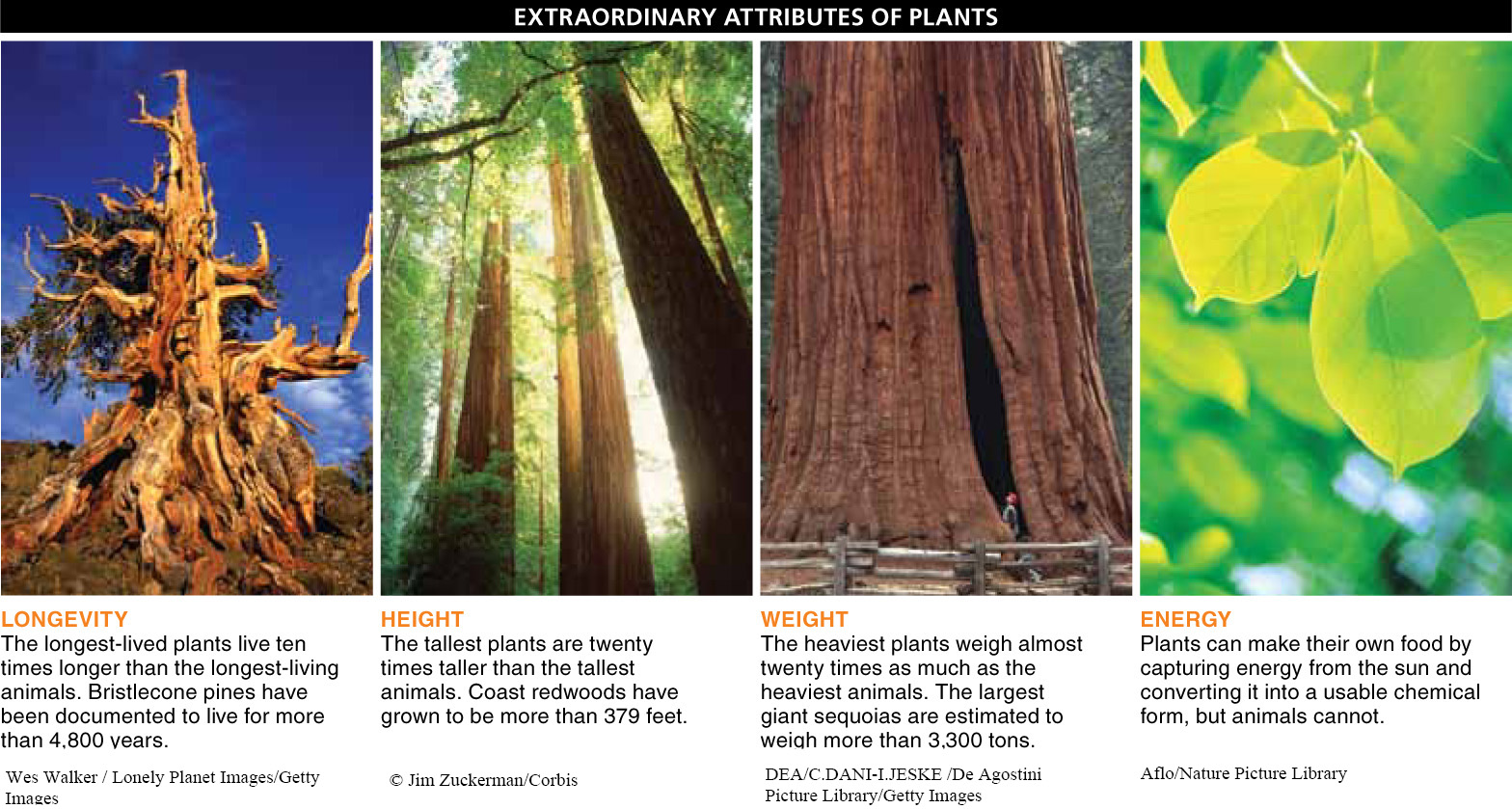
Plants are better than animals. Actually, that’s an absurd thing to say. But only because biology isn’t a contest, and from the perspective of evolution, any species that is not extinct can be considered a success. By many measures, though, plants do surpass animals, having developed a stunning diversity of structures and features during their evolution.
Consider some vital statistics on plants and animals (FIGURE 17-1).

Plants versus animals: Which can live longer? Grow larger?
1. Longevity. The longest-
2. Height. The tallest plants are 20 times taller than the tallest animals. Coast redwoods, found along the west coast of North America, have grown to more than 379 feet (115 m). The tallest giraffe grew to just under 20 feet (6 m).
3. Weight. The heaviest plants weigh almost 20 times as much as the heaviest animals. The largest giant sequoiasare estimated to weigh more than 3,300 tons (almost 3 million kg). The largest blue whales—
4. Energy acquisition. Most important is that plants can make their own food by capturing energy from the sun and converting it into a usable chemical form, but animals cannot. Consequently, animals rely on primary producers such as plants for energy. This is why the total amount of plant matter on earth is more than 10 times the biomass of all the animals.
In fact, plants have a host of strategies, vastly different from those that have evolved in animals, for growth, competition, defense, and reproduction. The difference in strategies used by plants and animals illustrates dramatically one of the fundamental truths of biology: there are multiple pathways to evolutionary success.
In this and the next two chapters, we explore the structural and physiological features of plants and how they represent adaptive solutions—

689
In later sections of this chapter we explore plant nutrition and the methods by which water, sugars, and other nutrients move from their site of uptake or production to the parts of the plant where they are needed. And we look at some of the cellular specializations in plants that make their unique tissue types possible. First, we look at one important distinction, based on structural differences, that separates most angiosperms—
TAKE-HOME MESSAGE 17.1
Plants are an extremely diverse and successful group of organisms, with distinct strategies for growth, competition, defense, and reproduction. Plants are generally composed of three distinct parts: roots, stems, and leaves.
List two ways in which plants are “better” than animals.
The longest-living plants live 50 times longer than the longest-living animals, the tallest plants are 20 times taller than the tallest animals, the heaviest plants weigh almost 20 times as much as the heaviest animals, and most plants can make their own food through photosynthesis.
690